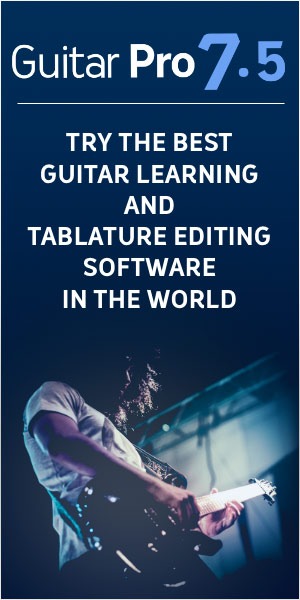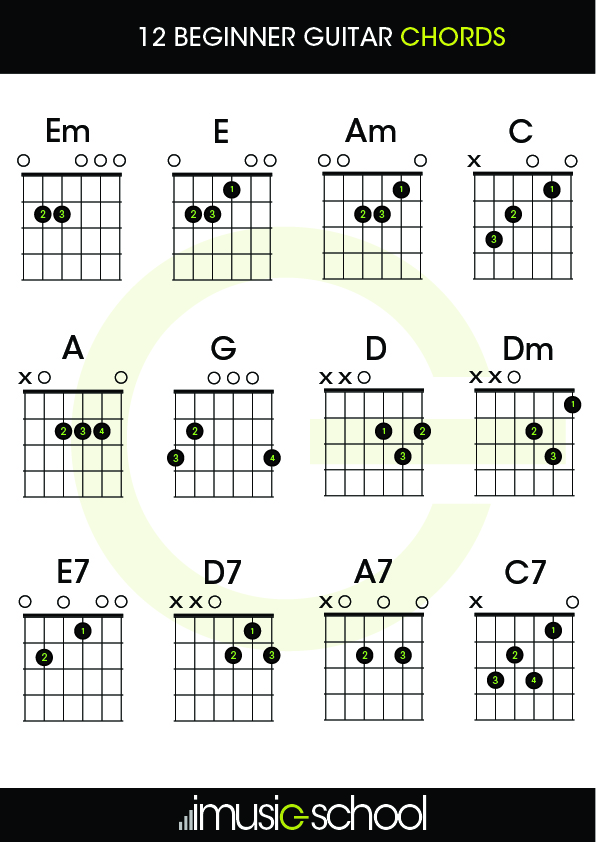Last Updated on July 30, 2023
Collegelearners will provide you with all the relevant information you are looking for on guitar chords for beginners, what are the 5 basic guitar chords, acoustic guitar chords chart, guitar chords for beginners pdf, guitar chords and lyrics, and so much more.
how to learn chords on acoustic guitar
Beginner Guitar Chords – 12 chords you must know
Discover the chords to know to start the guitar!
It’s not always easy to navigate among all the chords when you start the guitar. But do not panic, we have prepared a summary sheet of 12 chords that you must learn first! In addition, you can download it to view it anytime!


DOWNLOAD THIS PRACTICAL DOCUMENT

Beginner on the guitar? Learn to read this fact sheet!
The chords are presented as chord diagrams. If you can not read them, do not panic, we explain to you everything!
- A chord diagram shows the neck of the guitar seen from the front, as if you held your guitar in front of you. The bass string (the low E string) will beon the left.
- The frets are symbolized by squares.
- The black circles tell you where to place your fingers. They are numbered to specify the position of each finger. From 1 for the index to 4 for the little finger.
- A cross over a rope indicates that it should not be played
- A round indicates that you have to play the “open string”, it means without pressing any square.
You now have the essential information to understand this fact sheet as beginner guitarists. If you want more details on the chord grids, discover how to play the guitar with imusic-school !
Why these 12 beginner guitar chords?
These major chords, minor and seventh are to learn first when starting on the guitar for several reasons:
- They are all located in the bottom of the neck and are “open” chords, that is, they are quite easy to achieve and remember! They are adapted to the level of a guitarist who starts. Here, no bar chords or complex finger positions.
- These chords will allow you to play many songs even if you are a beginner! Indeed, they are very frequently used, so you will have access to a wide repertoire in different styles (pop, rock, reggae, blues, folk …) very quickly. It’s still fun to learn an instrument!
As you can see, these beginner guitar chords are a stage in which all guitarists get started. To simplify your work, we offer you a downloadable PDF file that you can take everywhere with you!
Need more chords? Enjoy our interactive guitar chords charts ! If you need guitar lessons, you will find progressive paths on imusic-school
guitar chords for beginners
11 Basic Guitar Chords


Learning guitar is one of the most rewarding things you can do – but it can also be one of the most challenging. Luckily, there are plenty of basic guitar chords that can bolster your skills without driving you crazy along the way.
Looking to learn guitar quickly and easily? Check out Guitar Tricks for and start learning guitar for free today.https://imasdk.googleapis.com/js/core/bridge3.501.0_en.html#goog_2020130352Volume 0%
With these 11 basic guitar chords, you’ll be able to gain a better understanding of how to play guitar at the most basic level.
1) A Major

A major is an easy chord to start with, since the entire chord is located on the second fret, so you can free up your other fingers to mix it up. All you do is put your first finger on the fourth string, second finger on the third string, and third finger on the second string – all on the second fret.
2) C Major

C major is one of the most widely used guitar chords for a reason. The chord is a delicate combination of your basic C, E, and G notes. Your second and third fingers will align along a slanted pattern to achieve the chord. Don’t worry if it’s tough at first – your fingers will loosen up over time.
3) D Major

D major has a unique triangular shape. Use your first two fingers to play E and G on the second fret, then hold down the B string on the third fret with your third finger. The resulting sound is optimistic and heartwarming, and it may sound familiar from many famous lighthearted tunes.
Further Reading: Guitar Tricks Review For Beginners
4) E Major

The E major chord is unique in that it requires every string to play. Put your first finger on the first fret of the third string, then put your second finger on the second fret of the fifth string. The third finger goes on the second fret of the fourth string. Lastly, hold them all down and strum in a cohesive motion. Try to hit them all in one swoop!
Still haven’t taken the leap and purchased your first guitar? While most beginners choose an acoustic, you may be interested in some cheap electrics! You can find a quality electric guitar under 300 if you look closely!
5) G Major

The G major chord may be a little more challenging than some other chords, and it can be hard to quickly reach other chords after playing it. To play it, your first finger goes to the second fret of the fourth string, your second finger goes to the third fret of the fifth string, and finally, place your third finger on the third fret first string and strum them all carefully.
Further Reading: Essentials on How to Read Guitar Tabs
6) A Minor

If you can play E major, A minor should be easy. Simply move your finger up one string. This chord is also very close to A major – just move the B note from the second fret to the first. Minor chords have a morose feeling to them, which makes them great for breakup songs. The A chord really is a staple for beginners to learn!
7) B Minor
Moving on to barre chords is a big step when mastering the guitar, and the B minor chord is a good place to start. A barre chord involves placing your finger across several strings at once, as opposed to just using the tip of your finger to hold down a specific note.
Here’s how to play it:
- Rest your finger flat across strings 1 to 5 on the second fret
- Put your third finger on the fourth fret of the fourth string
- Your fourth finger goes on the fourth fret of the third string
- Your second finger goes on the third fret of the second string
- Strum all chords in unison without hitting the sixth string
8) C Minor

C minor is a popular chord for songs that want to tell a story with heartfelt emotion. It is both sad and meaningful, lingering long after it has been strummed. Unfortunately, it is also one of the hardest chords to play because it requires you to twist your hand awkwardly. To play it, put your pointer finger barred on the third fret from the first to fifth strings, while placing your second finger on the second string (B) on the fourth fret. Lastly, your third finger will need to go on the fourth string (D) and the fourth finger will go on the third string (G) – both on the fifth fret.
Further Reading: Learn How to Play Guitar Better Today
9) D Minor

The D minor chord is almost exactly like its D major counterpart. However, you’ll need to move the high E from the second fret to the first fret. The fifth and sixth strings will need to be muted for the chord to sound correct. D minor sounds like you’re gearing up to deliver something impactful. It’s commonly used by musicians of all types, but it sounds especially at home in a good country or folk song.
10) E Minor

If you’re looking for easy guitar chords, E minor is a good place to start. All you need to do is play an E major, except you remove the G string component.
Even novices can master the E minor chord in a matter of minutes.
11) G Minor

This isn’t a chord you’ll be playing much, but it can be a nice punctuation point to a song. G minor has a creepy sound if done right. To play, simply use the third fret and barre all six strings. Then place your third finger on the fifth fret on the fifth string. From there, you’ll use your fourth finger to hold down the fifth fret of the fourth string – also known as the D string. Then, strum with confidence.
